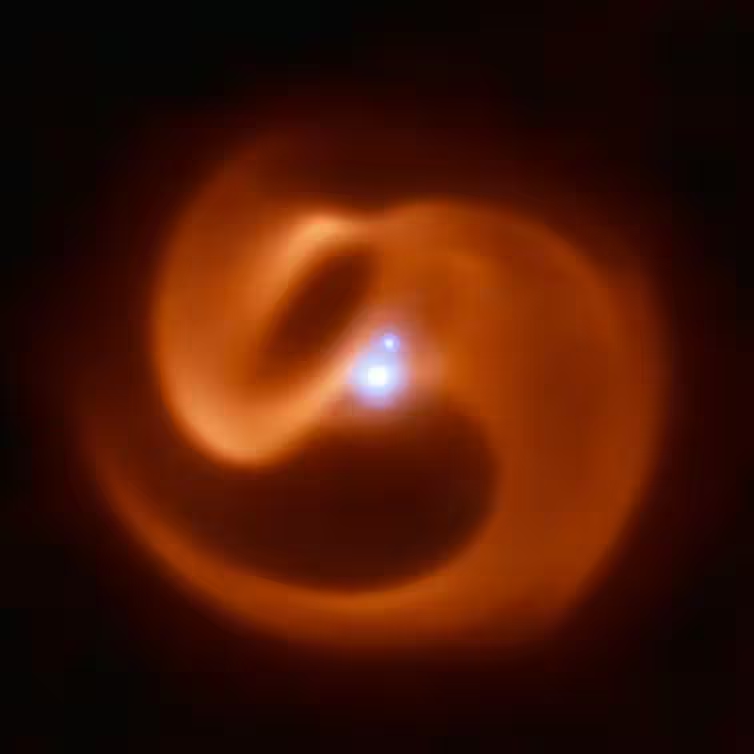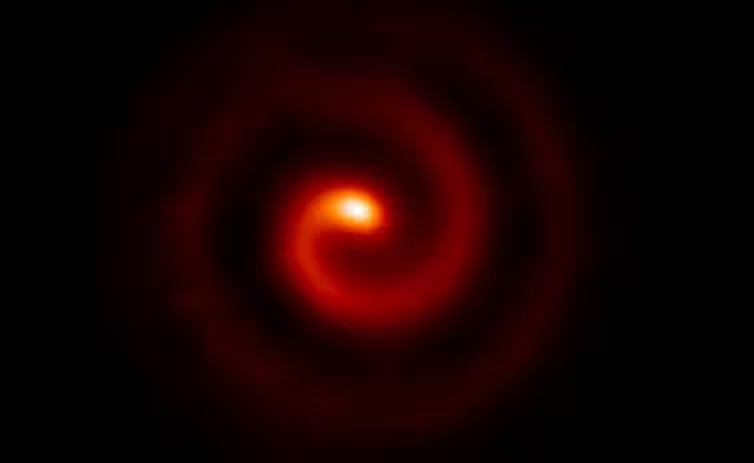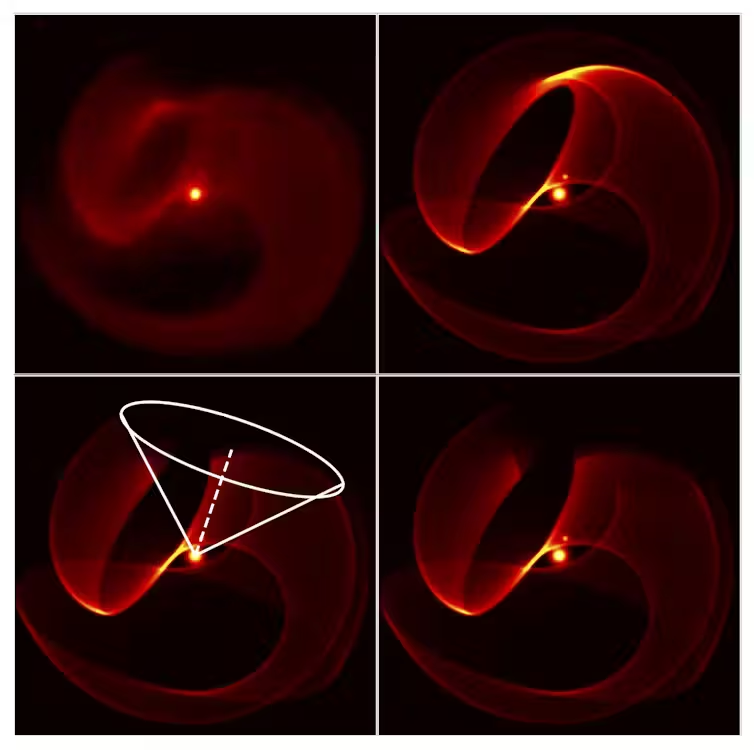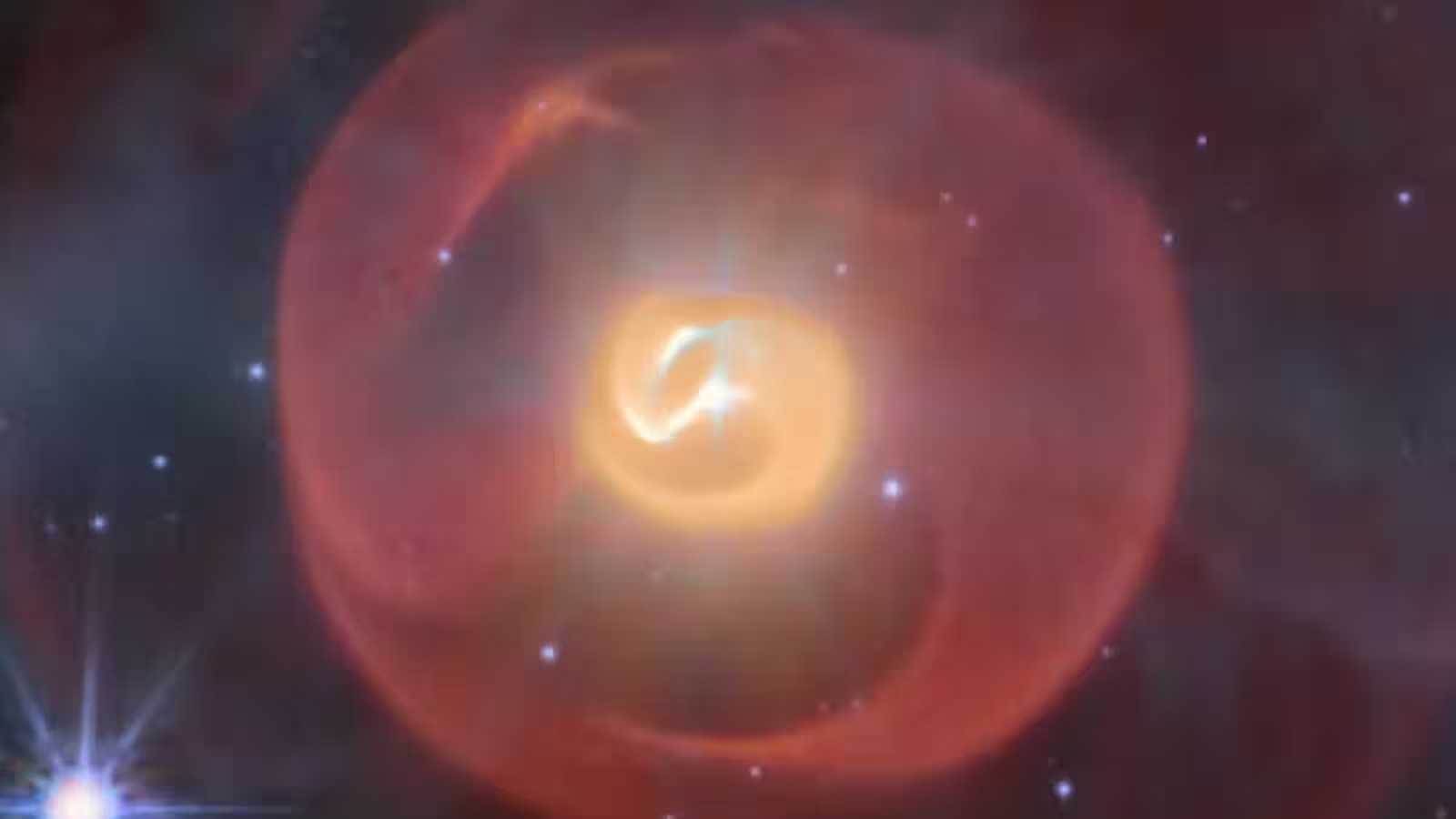5 Minutes
Revealing the Mysteries of the Apep Nebula Through Advanced Infrared Imaging
On the eve of a crucial academic milestone, radio astronomer Joe Callingham shared an extraordinary infrared image captured after five years of anticipation. Obtained via the Very Large Telescope (VLT) in Chile, this image revealed two massive dying stars wrapped in an enormous spiral of dust resembling a serpent devouring its own tail. This celestial structure was named Apep, inspired by the Egyptian serpent god of destruction. Recently, NASA’s James Webb Space Telescope (JWST) has provided an even more detailed infrared view of Apep, delivering breathtaking imagery and new insights now documented in two scientific papers on arXiv.

The Final Stages of Massive Stars: Wolf-Rayet Phenomena and Dust Formation
Massive stars undergo violent transformations before their catastrophic demise as supernovae. These stars, known as Wolf-Rayet stars, strip away their outer hydrogen layers through intense stellar winds—far more powerful than those emitted by our Sun—exposing their dense, heavy cores. This Wolf-Rayet phase, lasting only thousands of years, is fleeting in cosmic terms but pivotal for star evolution.
Most massive stars often exist as binary systems, paired gravitationally with a companion star. When the turbulent, high-velocity winds from a Wolf-Rayet star collide with those of its weaker companion, the interaction compresses the gas and creates pockets of dense, cooler regions where carbon-rich material condenses into dust. This process is crucial, as this carbon dust represents some of the earliest solid materials in the cosmos, integral to the composition of planets and ultimately life itself.
As the dust is expelled almost linearly by the Wolf-Rayet star’s winds, the orbital motion of the binary system sculpts it into a striking spiral-shaped nebula. These structures resemble water sprays seen in sprinkler systems when viewed from above. Prior to JWST observations, Apep was expected to display a similar elegant pinwheel pattern, akin to previously studied nebulas.

JWST Reveals Apep’s Unique Binary Dynamics and Dust Architecture
Using JWST's advanced infrared camera—which detects heat signatures much like thermal imaging devices used in other fields—the research team uncovered new surprising details about Apep. Unlike typical systems featuring one dominant Wolf-Rayet star overwhelming a weaker companion, Apep consists of two nearly equal Wolf-Rayet stars. Their winds collide with comparable force, spreading dust over an expansive conical region that forms a wind-sock shaped nebula rather than a pinwheel.
Earlier observations had noted a third, more distant star possibly associated with Apep. This star’s presence, once uncertain, appears confirmed by JWST data that highlight a characteristic asymmetry in the dust shells—a “bite” likely caused by the third star's winds interacting with the surrounding nebula.
One puzzling aspect addressed with JWST’s higher resolution was the dust’s surprisingly slow apparent velocity compared to the stellar winds. Initially hypothesized as dust entrained in a slower, dense equatorial outflow originating from a rapidly rotating Wolf-Rayet star—a scenario more common in the early universe—the new data suggest alternative interpretations, refining our understanding of the system’s dynamic behavior.
Scientific Analyses: Expanding Our Understanding of Stellar Evolution and Dust Production
The detailed JWST observations have been extensively analyzed in two separate papers. Caltech astronomer Yinuo Han’s study focuses on the cooling process of the nebular dust and establishes a connection between background dust structures and the foreground stars. Han’s findings also propose that these stars are located much farther from Earth than initially believed, implying extraordinarily high intrinsic brightness, which in turn modifies earlier hypotheses regarding stellar wind speeds and rotational velocities.
Simultaneously, a study led by Macquarie University graduate student Ryan White presents a sophisticated computational model of the nebula’s morphology. This model deciphers the precise orbital mechanics of the inner stellar pair and confirms the interaction imprint left by the third star’s wind. These insights underscore the complex, multi-star nature of Apep and challenge simplified models of Wolf-Rayet binary systems.

Implications for Astrophysics and Cosmic Dust Origins
Exploring systems like Apep deepens our comprehension of massive star lifecycles, particularly the processes that lead to supernovae and black hole formation. Moreover, understanding how carbon dust forms in these turbulent stellar interactions sheds light on the origins of dust grains that eventually contribute to planetary systems and biological material.
Beyond its scientific significance, Apep exhibits a captivating natural elegance. The interplay of powerful stellar winds and orbital dynamics produces nebular geometries that captivate astronomers and exemplify the intricate beauty hidden within cosmic violence.
The study of Apep and similar systems demonstrates how the violent deaths of stars sculpt complex cosmic puzzles—subjects that would intrigue foundational scientists like Newton and Archimedes. Solving these mysteries provides not only scientific advancement but also profound joy through discovery and shared knowledge.
Conclusion
The recent JWST observations of the Apep nebula have unraveled spectacular details of this rare Wolf-Rayet triple star system. By revealing the nearly equal-strength winds of two massive stars and the influence of a third companion, astronomers have gained invaluable insights into the mechanisms of dust formation and stellar wind interactions in the late evolutionary stages of massive stars. These findings refine our understanding of supernova progenitors and the cosmic origins of carbon dust essential for life. Apep stands as a striking example of how cutting-edge infrared astronomy can illuminate the dynamic and often violent processes shaping our universe, bridging cosmic phenomena with the fundamental science that continues to inspire humanity.
Source: sciencealert



Comments